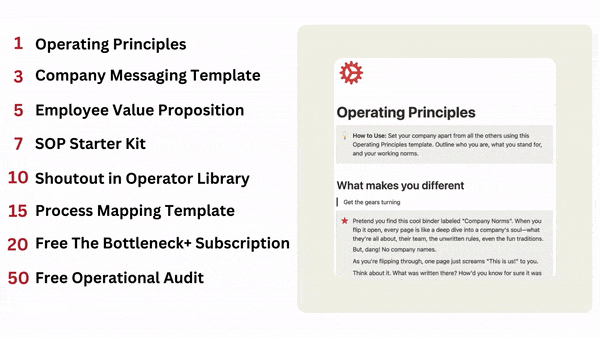
Read Time: 4.8 Minutes
Happy Sunday Operators ⚙️
Welcome to our weekly Sunday edition.
The first part of today's case study is free, but the tactical guide at the end is for The Bottleneck+ members only.
If you are interested in becoming a member, click here.
Having said that, let’s investigate how Gmail accidentally created an amazing go to market motion in 2004.

What was Gmail in 2004?

Some consider April 1, 2004 as the dawn of the web's modern age, with the launch of Gmail. The tech titan launched with an offer that was hard to wrap your head around (at the time): 1GB of storage.
Back when squinting at a Hotmail inbox meant juggling a measly 2MB, Google's move seemed like a moonshot.
A search behemoth dabbling in email? And promising a storage capacity that blew competitors out of the water? From technical hurdles to philosophical debates, few believed in the project's prospects.
Many didn't believe the launch was even going to happen.
Gmail was a harbinger of the cloud computing era, setting the stage for the web services we now take for granted.
This wasn't a spur-of-the-moment brainwave.
For nearly three years, Gmail was a pet project that even Google insiders eyed with a mix of skepticism and intrigue.
Gmail, according to its creators, was a gamble, a deviation from the web search-centric path that stirred fears of awakening Microsoft's wrath.
The road to Gmail's public unveiling was anything but straightforward.
Cloaked in secrecy, the project teetered on the edge of being shelved, contingent on meeting Google's lofty standards.
And when D-Day arrived—April Fools', no less—the Gmail team found themselves in a tech version of a catch-22. They lacked the server firepower to support their ambitious vision due to doubts about their launch readiness.
Gmail's liftoff was powered by 300 cast-off Pentium III machines.
To limit any complications, Gmail was invite-only.
Initially, this scarcity was a byproduct of necessity and morphed into Gmail's most unexpected marketing triumph.
Invites fetched eye-watering sums (over $150 a pop) on eBay, and Gmail became the email status symbol, a badge of digital coolness.
By accident, they stumbled on a fantastic go-to-market strategy. Intrigued by the mystery, the press began to talk. Soon, everyone was dying to try out the new email platform.
So why did Gmail invite-only policy drive growth?

Why should you care?
The Commodity Theory in Action

By making Gmail access an invite-only affair, Google transformed what could have been a mundane product rollout into a coveted invite that everyone wanted their hands on. This strategy did several things:
Created Demand Through Scarcity - Human psychology kicks in when something is scarce; we want it more (check out the commodity theory). Gmail leveraged this by limiting access, making an email service—a utility product—into something people talked about and yearned for.
Controlled Scalability - This approach allowed Google to scale its infrastructure in a measured way, ensuring service quality remained high for its growing user base.
Built a Community of Early Adopters - Early Gmail users felt part of an exclusive club. This fostered a strong initial user base and turned these users into evangelists for the product.
If you want to build your invite-only strategy, then check the section down below (paid members only)


Spread The Word
Share The Bottleneck with friends to get a few freebies. Maybe you’ll make some new friends along the way 😆
We’ll give you free stuff and more friends if you share a link. Only one link.

{{rp_personalized_text}}

